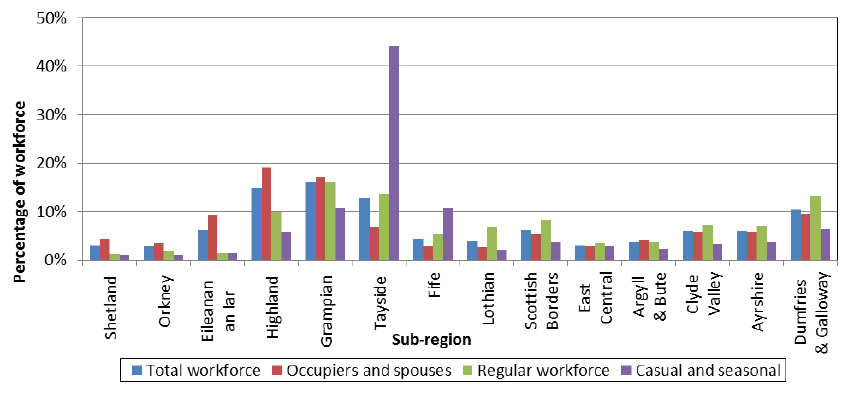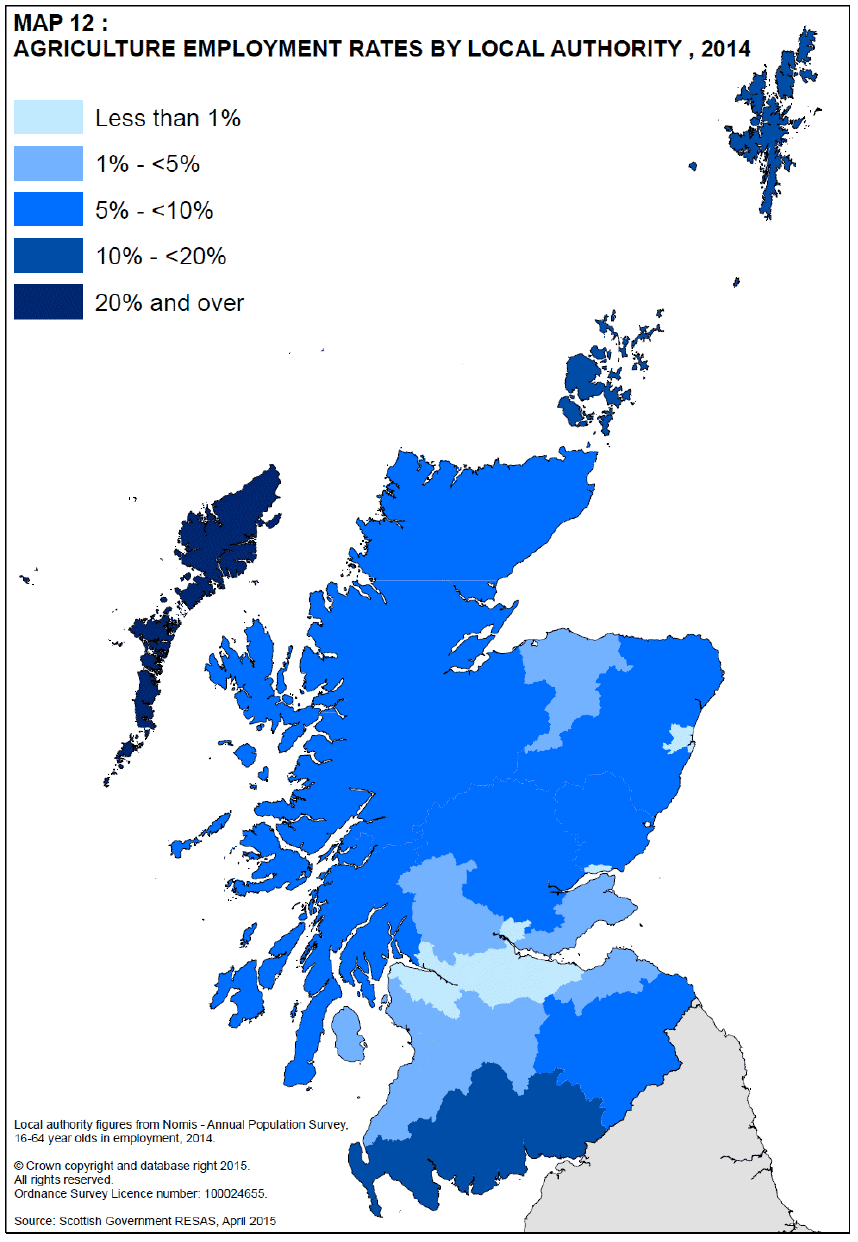Economic Report on Scottish Agriculture 2015
Economic Report on Scottish Agriculture 2015 presenting an overall picture of Scottish agriculture using data from the various agricultural surveys that RESAS manage.
This document is part of a collection
7. Labour and Machinery
7.1 Overview of labour (Tables C19, C21(i), C21(ii))
There were a total of 66,300 people working on agricultural holdings at 1st June 2014. This was made up of 26,300 working occupiers (comprising 40 per cent of the total workforce), 12,700 working spouses (19 per cent), 13,200 full time regular staff (20 per cent), 7,400 part time regular staff (11 per cent) and 6,700 casual and seasonal staff (ten per cent).
Over half of the total agricultural workforce was located in Grampian (10,700 or 16 per cent), Highland (9,900 or 15 per cent), Tayside (8,500 or 13 per cent) or Dumfries and Galloway (6,900 or ten per cent). These totals represent the number of people employed or working on 1st June 2014, but do not take into account differing working patterns or seasonal labour.
Chart 7.1: Distribution of the workforce by sub-region, June 2014

Map 12 illustrates the employment rates by local authority (number of people employed in agriculture as a percentage of people employed in the area), showing highest levels of employment in agriculture in Eileanan an Iar, Orkney, Shetland and Dumfries and Galloway. In addition, there is also a clear split between local authorities within and outwith the central belt, demonstrating the relative importance of agriculture in terms of employment among these regions.
Contact
Email: Agricultural Statistics
There is a problem
Thanks for your feedback
